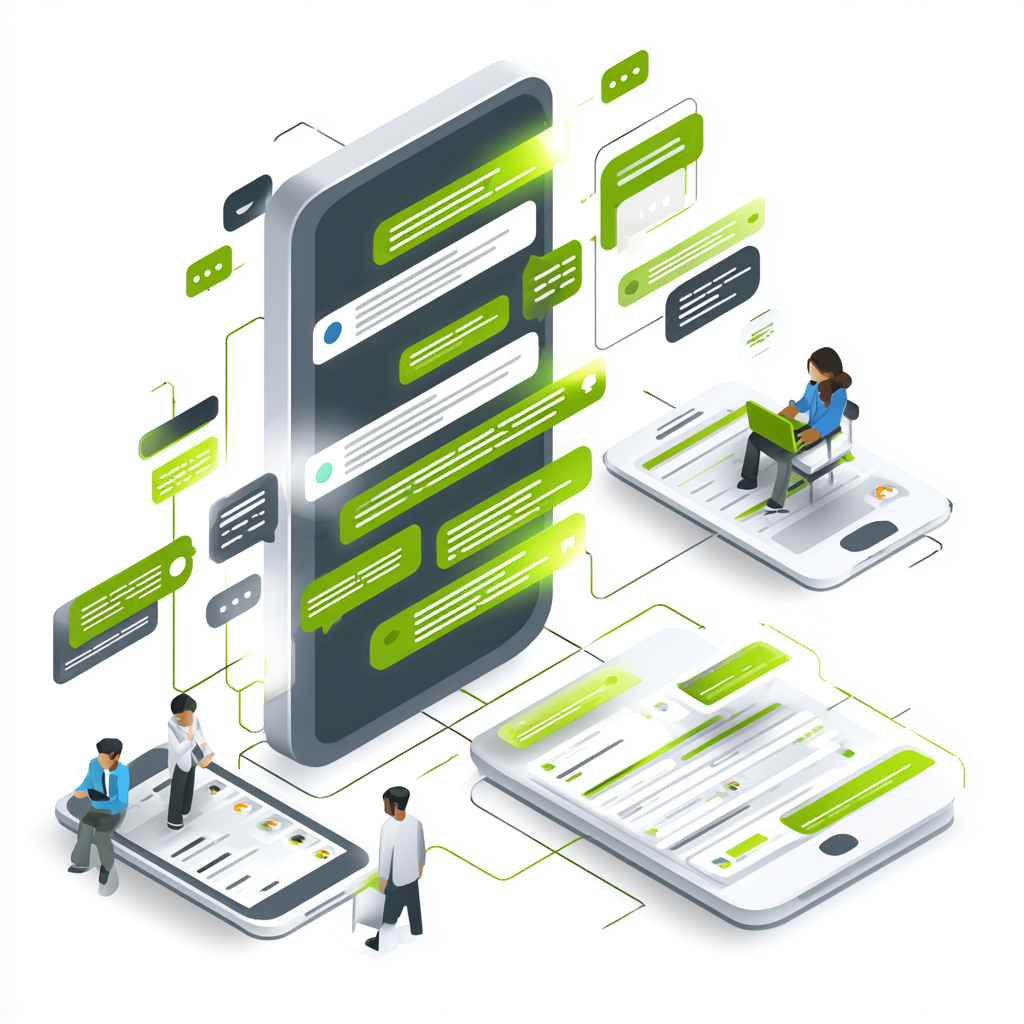Businesses continually seek effective ways to engage with customers, and bulk SMS analytics offers a powerful avenue. Because SMS marketing is quick and direct, it is crucial to understand how well these campaigns perform. With proper analytics, assessing the effectiveness of your messaging can be a manageable task.
Bulk SMS analytics provides valuable insights into recipient interactions, allowing businesses to gauge the overall performance of their campaigns while making informed decisions for future outreach. This article will explore bulk SMS analytics, key metrics, and how to use data to refine your SMS strategy.
What is bulk SMS analytics?
Bulk SMS analytics refers to systematically collecting and analyzing data generated from SMS marketing campaigns. This process involves tracking delivery, open, and conversion rate metrics to evaluate how well messages resonate with recipients. This data allows businesses to identify trends, optimize messaging strategies, and enhance customer engagement.
The importance of bulk SMS analytics
Bulk SMS marketing allows businesses to efficiently send promotional messages, alerts, and updates to a large audience. Understanding the effectiveness of these campaigns can be challenging without proper analytics. Bulk SMS analytics provides insights into how recipients interact with your messages and helps gauge the overall performance of your campaigns.
Benefits of SMS analytics in tracking success
The benefits of SMS analytics in tracking success include:
- Improved engagement: By analyzing recipient responses, businesses can identify what messages resonate with their audience, leading to higher engagement rates.
- Targeted marketing: Analytics enables marketers to segment their audience based on behavior and preferences, allowing for more personalized and effective messaging.
- Cost efficiency: Understanding which campaigns yield the best results can help businesses allocate their marketing budgets more effectively, reducing waste.
- Informed decision-making: Data-driven decisions are inherently more reliable. Analytics provides concrete evidence to support strategic changes and optimizations.
- Increased ROI: By identifying and correcting underperforming elements, companies can reduce costs and improve the effectiveness of each campaign, resulting in a higher return on investment (ROI).
- Performance tracking: Continuous monitoring of SMS campaigns allows businesses to track key performance indicators (KPIs), facilitating timely adjustments.
Key metrics in bulk SMS analytics
To effectively analyze SMS campaigns, businesses need to focus on specific metrics that reflect the performance of their messages. Here are some of the most important metrics to track:
Delivery rate:
The delivery rate indicates the percentage of messages successfully delivered to recipients. A high delivery rate signifies that your messages are reaching the intended audience, while a low rate may suggest issues with your contact list or carrier restrictions.
Open rate:
SMS messages typically have higher open rates than emails, so tracking how many recipients read your messages is still vital. The open rate can provide insights into the effectiveness of your messaging and timing.
Click-through rate (CTR):
For SMS campaigns that include links, the click-through rate measures the percentage of recipients who clicked on the link. This metric is crucial for assessing the engagement level and effectiveness of your call-to-action (CTA).
Conversion rate:
After receiving your SMS, the conversion rate tracks the percentage of recipients who took a desired action, such as purchasing or signing up for a newsletter. This metric is essential for evaluating the overall ROI of your campaign.
Opt-out rate:
Monitoring the opt-out rate helps businesses understand how many recipients chose to unsubscribe from future messages. A high opt-out rate can indicate message relevance or frequency issues, signaling the need for adjustments.
Response rate:
If your SMS campaigns encourage direct replies (e.g., customer service inquiries or surveys), tracking the response rate can provide valuable feedback on customer engagement and satisfaction.
Bounce rate:
The bounce rate is the percentage of messages not delivered due to invalid numbers or carrier issues. Understanding the bounce rate can help maintain a clean and updated contact list.
Utilizing analytics for the optimization of bulk SMS campaigns
After establishing the key metrics, the next step is to use this data to optimize your SMS marketing strategy. Here are several ways to leverage analytics for continuous improvement:
- A/B testing is a qualitative research technique that evaluates two or more design versions to ascertain the best. Conduct A/B tests by sending two message variations to different audience segments. Analyze which version performs better based on open rates, Click-through rates (CTR), and conversion rates. Use these insights to refine your messaging in future campaigns.
- Segment your audience: Segmentation allows you to divide your audience into smaller groups based on demographics, past behavior, or preferences. Tailoring your messages to specific segments can significantly enhance engagement and conversion rates.
- Timing optimization: Analyze the data to determine the optimal times for sending messages. Factors such as time zone, day of the week, and seasonal trends can impact engagement. Experiment with different sending times and track performance to find the most suitable windows for your audience.
- Personalization: Use the insights gained from analytics to personalize your messages. Addressing recipients by name and tailoring content based on their previous interactions can lead to higher engagement and loyalty.
- Frequency management: Balancing the frequency of your messages is crucial. Too many messages can lead to opt-outs, while too few may cause your audience to forget your brand. Use analytics to find the sweet spot for your audience.
- Refine your call-to-action (CTA): Analyze the effectiveness of your CTA. If specific phrases or formats yield higher CTRs, integrate those learnings into your future messages. Experiment with different CTAs to see which ones resonate most with your audience.
- Monitor competitors: Observing competitors can provide additional insights. Analyze their SMS strategies, messaging, and engagement use rates to spot possible gaps and opportunities in your campaigns.
Tools and technologies for SMS analytics
Businesses can leverage various tools and technologies to gather and analyze SMS data effectively. Here are some popular options:
- SMS marketing platforms: Many SMS marketing platforms, such as Arkesel, Twilio, EZ Texting, and TextMagic, offer built-in analytics features. These tools allow you to track delivery and open rates, providing a comprehensive overview of your campaigns.
- Customer relationship management (CRM) systems: Integrating SMS analytics with your CRM system can enhance your understanding of customer behavior. You can gain a holistic view of your audience by linking SMS interactions with other customer data.
- Google analytics: For SMS campaigns that direct users to your website, Google Analytics can provide valuable insights into user behavior post-click. Understanding how SMS traffic interacts with your site can inform future campaigns.
- Data visualization tools: Tools like Tableau and Google Data Studio can help visualize SMS analytics data, making it easier to see trends and patterns. Visual representations can aid in presenting findings to stakeholders.
Challenges in bulk SMS analytics
SMS analytics offers numerous advantages, but there are also challenges to consider:
- Data privacy regulations: Compliance with data protection regulations, such as GDPR and CCPA, is crucial. Businesses must ensure that they are handling customer data responsibly and transparently.
- Data quality: Maintaining a clean and updated contact list is essential for accurate analytics. Regularly verify and update your database to minimize bounce rates and improve delivery rates.
- Interpretation of data: Data interpretation can be complex. Businesses can make informed decisions with a clear understanding of what the metrics mean. Investing in training or hiring experts can help mitigate this issue.
- Integration with other channels: Integrating SMS analytics with other marketing channels can be challenging but is essential for a comprehensive view of customer interactions. Ensure that your systems can communicate effectively to gather all relevant data.
Best practices for effective bulk SMS tracking
To make the most of Bulk SMS Analytics, follow these best practices:
- Set clear goals: Define specific goals for each campaign, such as increasing click-through rates, boosting conversion rates, or reducing opt-outs. Clear objectives allow for more focused analysis and actionable insights.
- Regularly review metrics: Continuously monitor your metrics to stay on top of your campaign’s performance. Regular reviews allow you to adjust tactics quickly, improving campaign effectiveness.
- Compliance with regulations: Always ensure compliance with relevant regulations, like the General Data Protection Regulation (GDPR) or the Telephone Consumer Protection Act (TCPA). This protects your brand and builds trust with customers who value their privacy.
- Repeat and improve: Refine your strategy using the insights gained from each campaign. Test new ideas, learn from results, and continually optimize to improve performance.
Driving success with effective bulk SMS analytics
Bulk SMS Analytics is essential for businesses to enhance their marketing strategies and build meaningful customer relationships. Companies gain insights into how messages come by tracking key metrics like delivery, open, and conversion rates. Data-driven messaging, timing, and segmentation adjustments lead to better engagement and a higher return on investment (ROI).
Regular analysis and optimization can transform SMS campaigns into an impactful communication channel that resonates with target audiences. As digital marketing advances, so does the role of analytics in shaping strategy. With proactive analytics, businesses position themselves for success in a data-driven world, making each SMS meaningful and building stronger connections with their audience.





